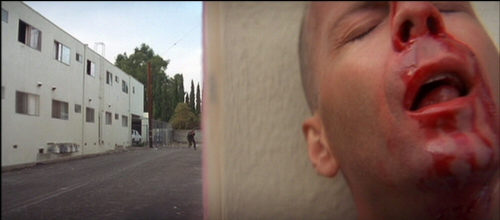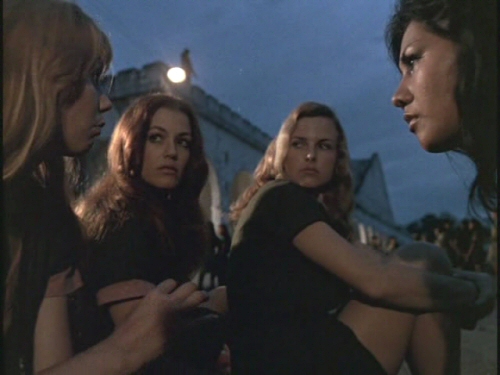The music is "Sous le Ciel d'Afrique" performed by Josephine Baker.
To-day was another busy day, and to-morrow shall also probably be busy. I think it's mainly that I let so many things accumulate while I was working on my comic last week that they're all dog piling me now.

Saturday night, I watched Women in Cages, a 1971 grindhouse film directed by Gerardo de León that'd been on my "to watch" list for a couple years. It floated to the surface of the internet soup for me a couple days ago, and my appetite was whetted by a quote from Quentin Tarantino on the Wikipedia entry about it, "'[the film] is just harsh, harsh, harsh,' he said, and described the final shot as one of 'devastating despair.'"
It's not a happy ending, though I'm tempted to make a top ten list of movies with more impressively bleak endings, except such a list would probably ruin the endings of those movies for people. The influence Women in Cages had on Tarantino isn't as blatant as Lady Snowblood or Thriller - A Cruel Picture, but neither of those pictures as strongly resembles Tarantino's sensibility for composition as Women in Cages.
De León seemed to like putting together scenes with subjects or objects in the extreme foreground related to subjects or objects in the extreme background. Shots like these;


reminded me of shots like this memorable one in Pulp Fiction;

And, actually, I was reminded of shots from Citizen Kane like this:

Deep focus, a camera keeping simultaneous focus on both foreground and background, was a revolutionary technique when Citizen Kane was made--the above shot, in fact, was beyond camera technology at the time and is in fact a process shot, but there are plenty of examples of deep focus in Kane, the effect of which, for me, was always to heighten the sense of dizzying extremes in the life of Charles Foster Kane. In Women in Cages, which is unmistakably a fantasy film, as it is a sexploitation film, the technique both makes the events on screen dreamlike and more threatening in their enormity than the cheap sets and costumes otherwise might be.

Such brash blocking sensibilities also serve to convey the point of view of my favourite character in the film, a heroin addict named Stokes played by Roberta Collins, who's not established as the central protagonist, but Collins' commitment to the role and her character's desperate and pragmatic ruthlessness make her far more interesting. Jeff, the actual main character, is a sort of ditzy, bland goodie two shoes. She's annoying more than anything else, and I found myself rooting for Stokes in her various attempts to murder Jeff.

Pam Grier as the villain is barely more than two dimensional, but functions well enough as an old fashioned movie foil whose most interesting quality is always style--Grier's got it in spades.
Another composition technique de León seemed to like, which I don't see often from Tarantino, is arranging three or more characters artfully for dialogue sequences;


I was sort of reminded of Kurosawa, who was a master at this sort of blocking.
Women in Cages has a few significant flaws--horribly unconvincing day for night shots and a few instances of extremely awkward and artificial action choreography. But what really impressed me was the economy of story telling--the opening credits, with just a few establishing shots, effectively convey the criminal vessel Zulu Queen's nature as a sort of floating brothel and drug den, and characters are introduced and defined very swiftly and unobtrusively in the prison.
My tweets from last night;
Only the farmer you need is missing.
He always buys bait in the pier cafe.
Proper world wars often break for fishing.
Parrot networks are loud, lofty and fey.

No comments:
Post a Comment